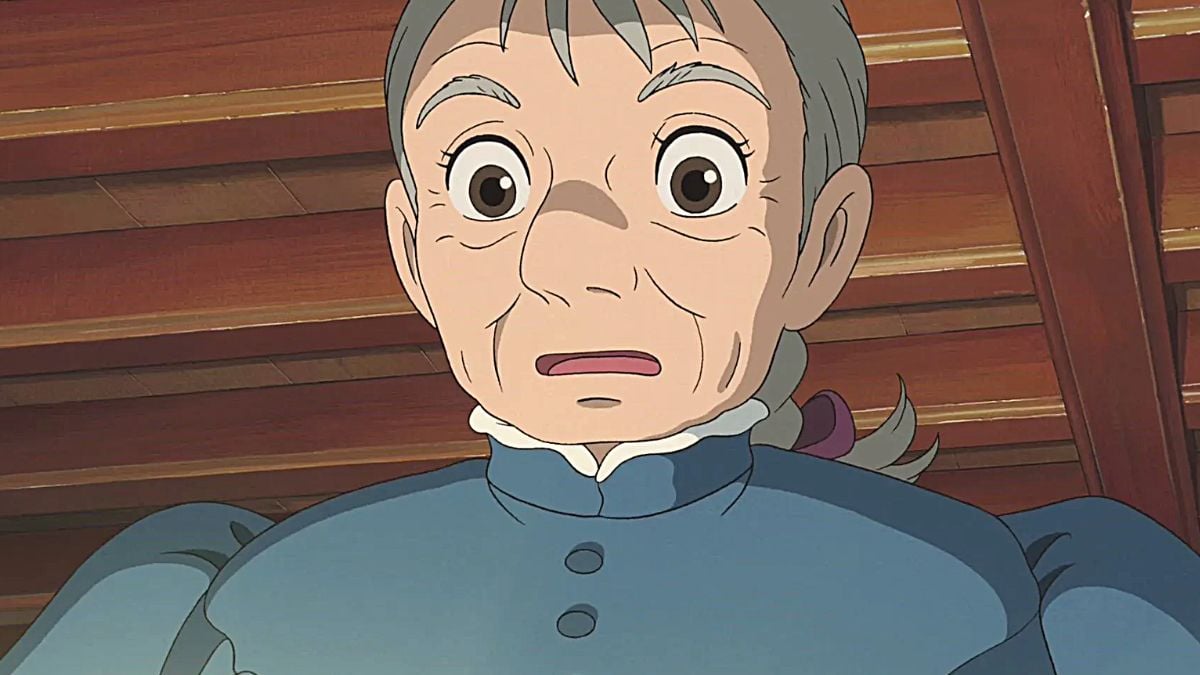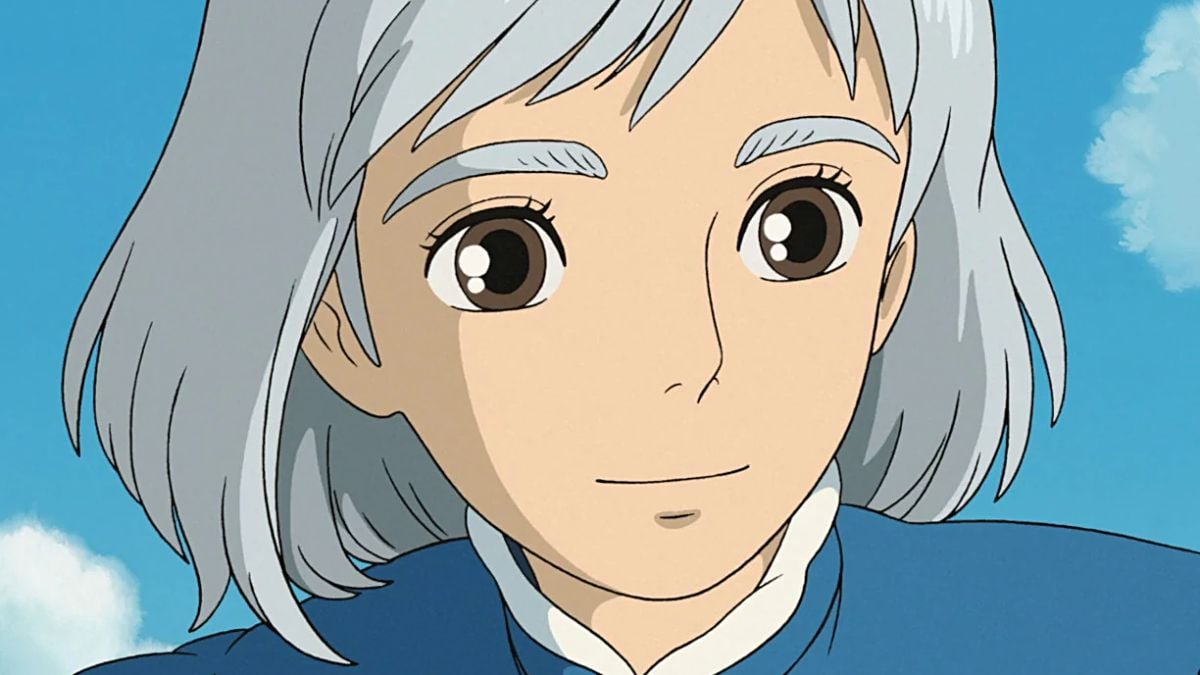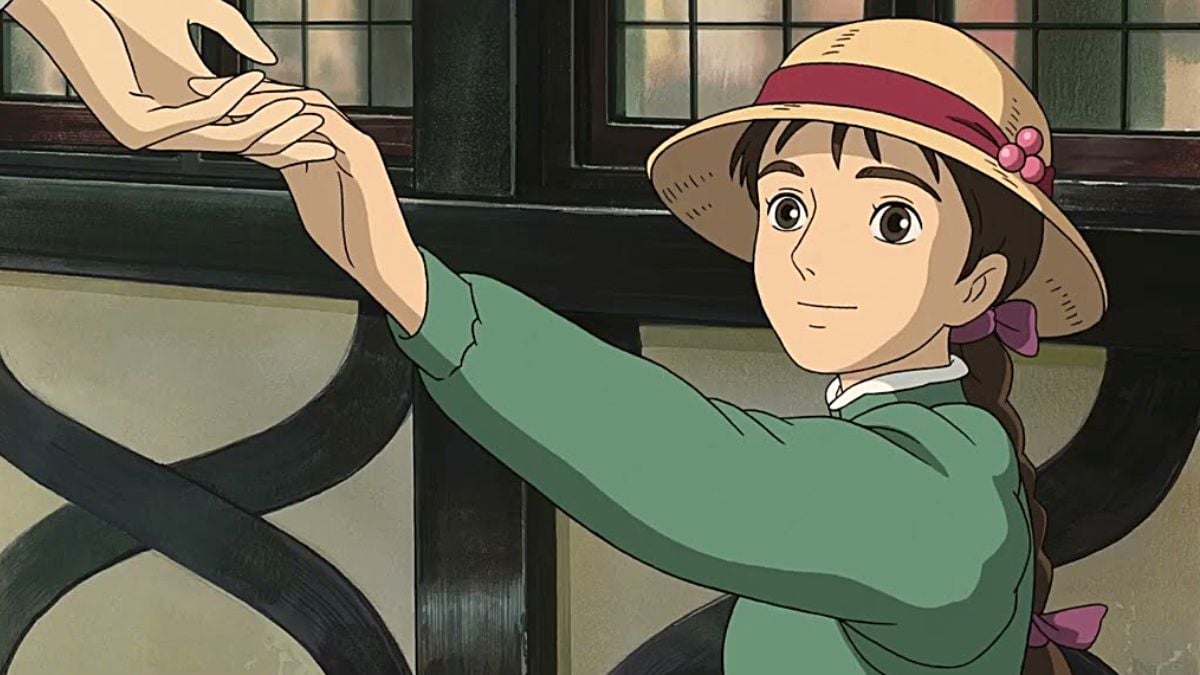Howl’s Moving Castle is considered by many to be Hayao Miyazaki’s Studio Ghibli masterpiece. It’s a beautifully animated fantasy film based on Diana Wynne Jones’s 1986 novel of the same name about a young girl named Sophie who is turned into an elderly woman by a witch, jealous of her interaction with a dashing wizard named Howl.
The film’s plot is relatively complex for what some might deem a children’s tale, and its themes, while evident, are never spelled out to facilitate comprehension. Throughout the film, while under the spell, Sophie’s appearance occasionally changes to appear a bit younger, and then old again. It might seem random, but there’s a very powerful reason behind this oscillation.
What prompts Sophie’s appearance to change in ‘Howl’s Moving Castle’?

Obviously, Sophie turns into an old lady because of the Witch of the Waste’s spell but the reason why she appears to be fighting back against the spell in certain scenes, as her looks turn more youthful, is much deeper than that. It’s all down to Sophie’s spirit and the way it translates into her actions. Of course, her magic, which she is not aware of at the beginning of the story, also plays a part.
You will notice the heroine of the story turn younger when she displays passion, confidence, bravery, fearlessness, and love — such as in the scene with Madame Suliman, the king’s head sorceress, where she defends Howl from her accusations. This is Miyazaki’s subtle way of saying that these kinds of feelings are what keep us young and invigorated, instead of brought down by life.
Whenever Sophie is feeling anxious, unsure of herself, and fearful of life and the challenges it presents, she reverts back to her elderly form. Similarly, while she sleeps, Sophie also looks her real age, because it’s a state of total relaxation. Of course, her love for Howl also plays a big part in this process, especially in the source material, where a look from the man she loves can make her feel many years younger.
What is the meaning of Sophie’s changing age in Howl’s Moving Castle?

The film trails Sophie’s journey to gaining agency and self-confidence through the adventures she conquers and the trust placed upon her by her newfound friends. What makes this seemingly traditional narrative particularly powerful in this fantastic Ghibli film, however, is that we get a visual representation of this growth as, in the final stretch of the story, Sophie gradually becomes younger. Her final form is young in appearance, with the grey hair of an old lady, which we can theorize represents maturity and the lessons she’s learned along the way. Self-love is the cure to the curse.
In general, Howl’s Moving Castle has a lot of messages about appearances and vanity, in comparison to strength of spirit and noble intentions and feelings, and how they can both affect how you look for better or for worse. This is true for Sophie, but also her sister Lettie, the Witch of the Waste, and even Howl. While this is unfortunately not exactly how the real world works (or we would all be much better off), there is an undeniable truth to this motif present in Miyazaki’s film and, to an extent, Jones’s book — it’s what we believe in and how we put that energy out into the world that really defines how young, old, beautiful, or ugly we truly are.

